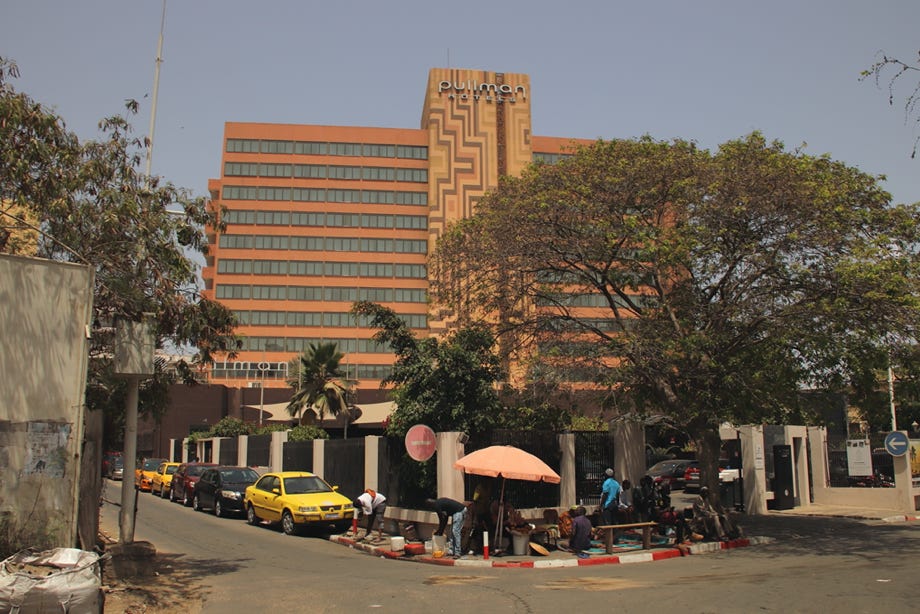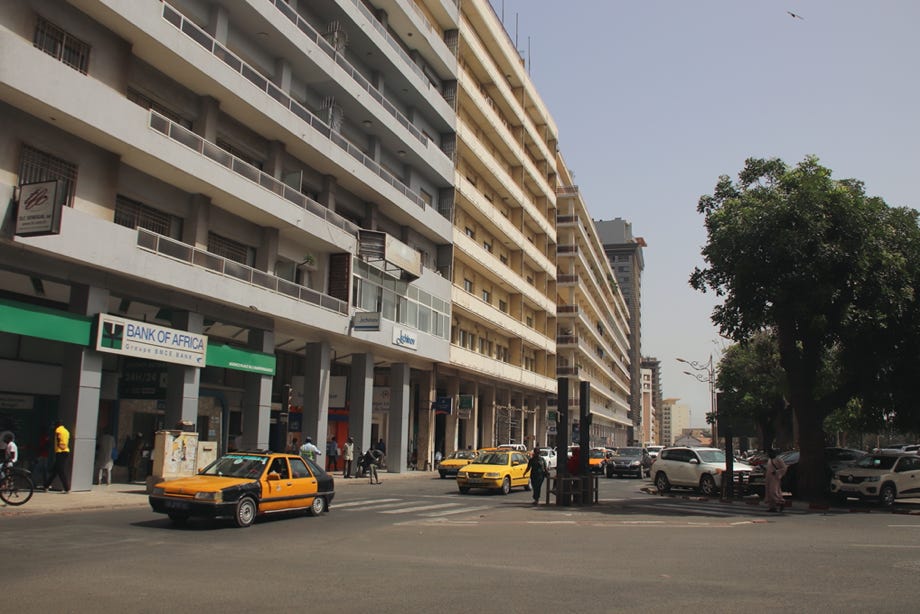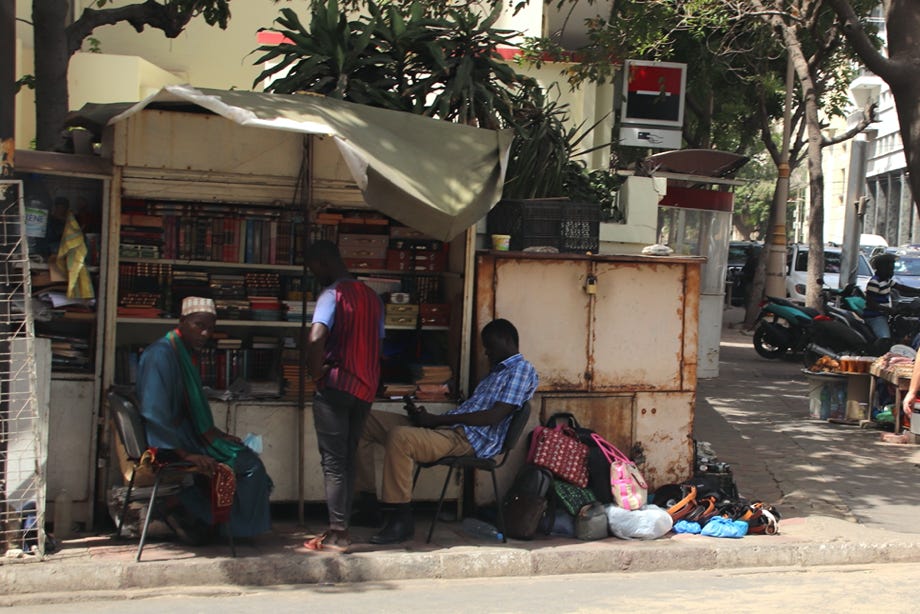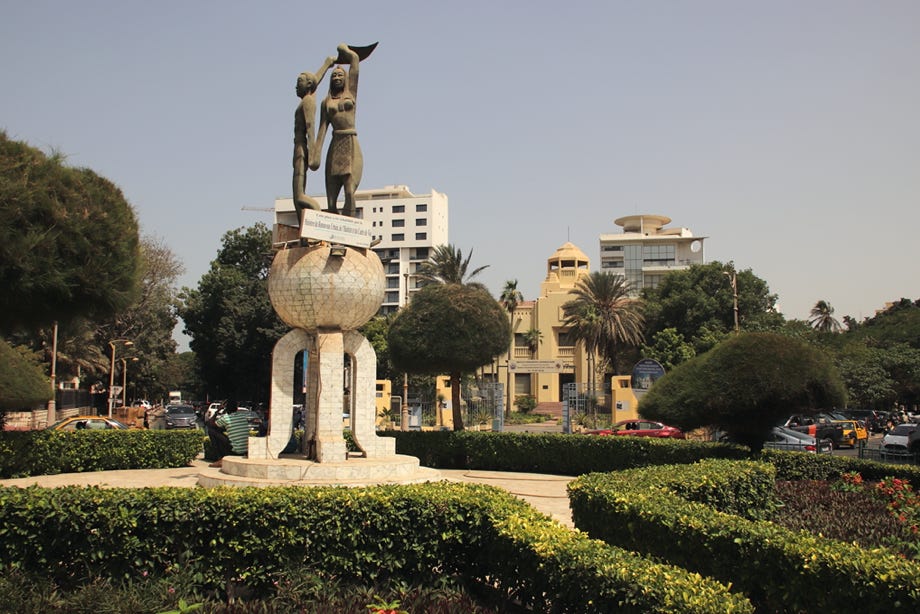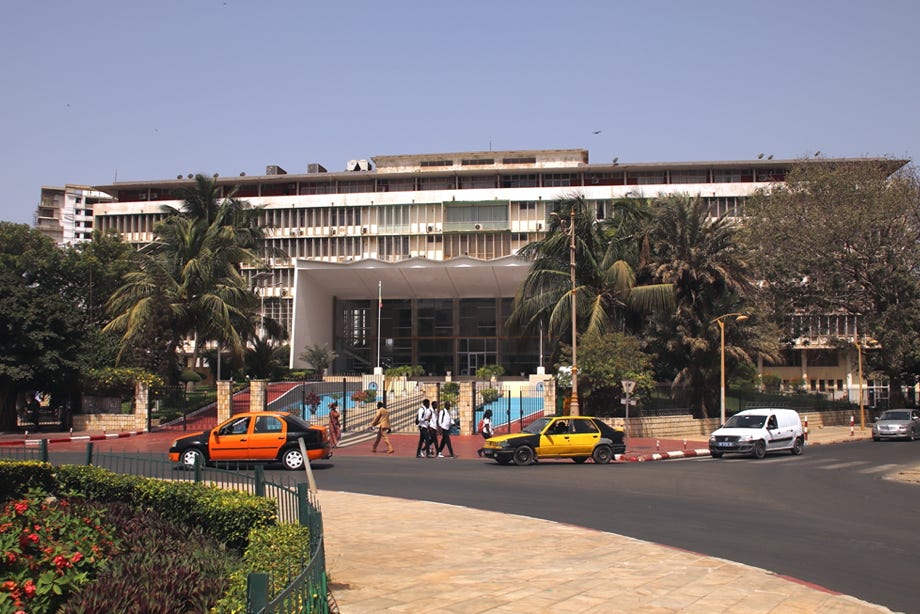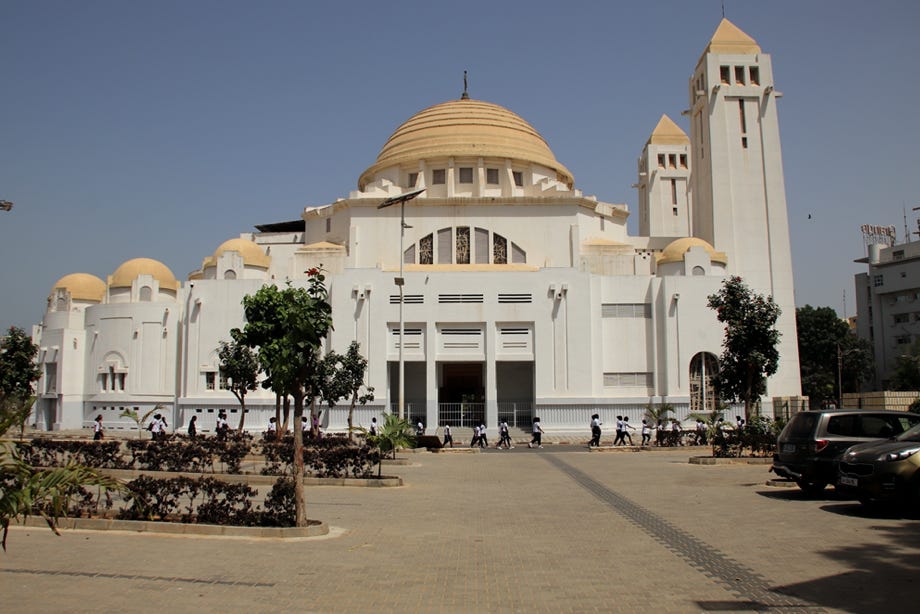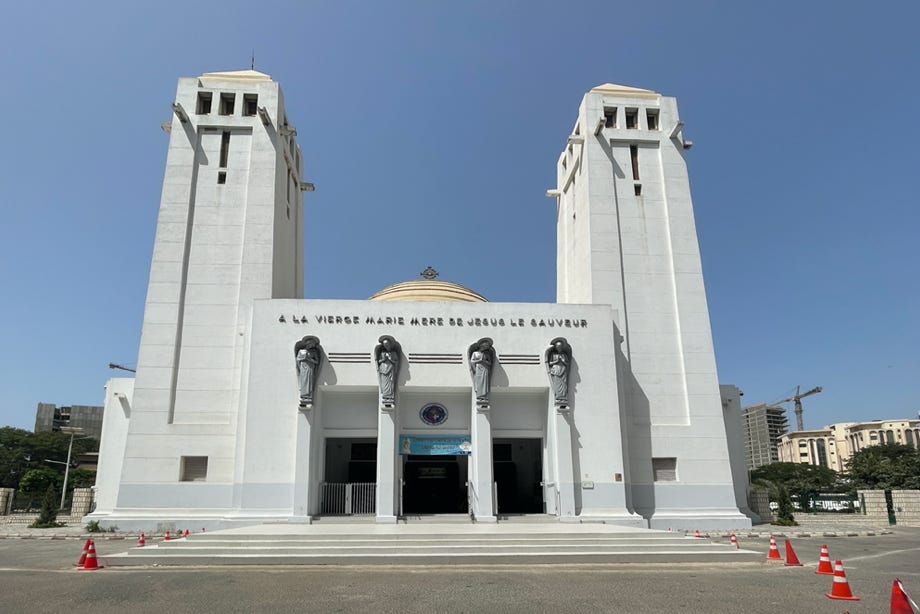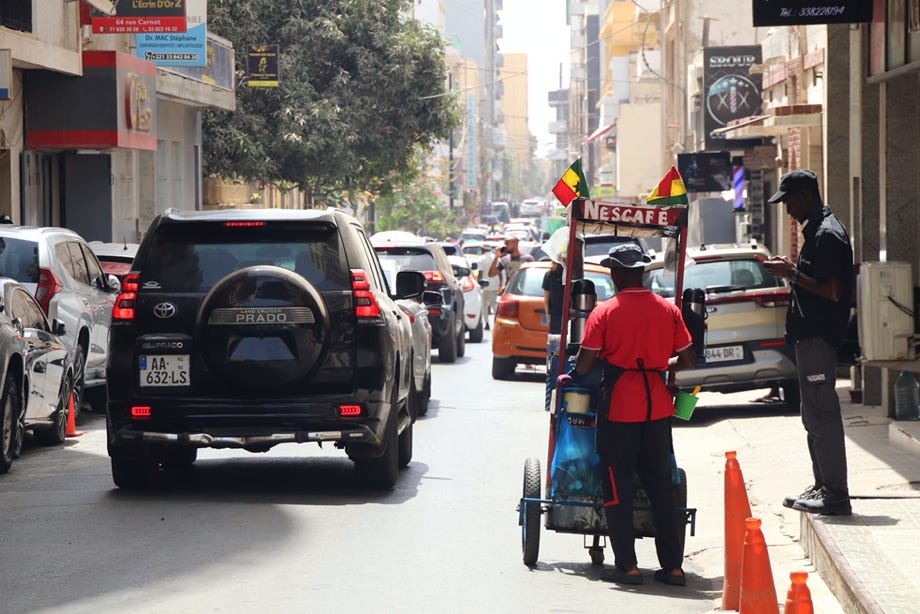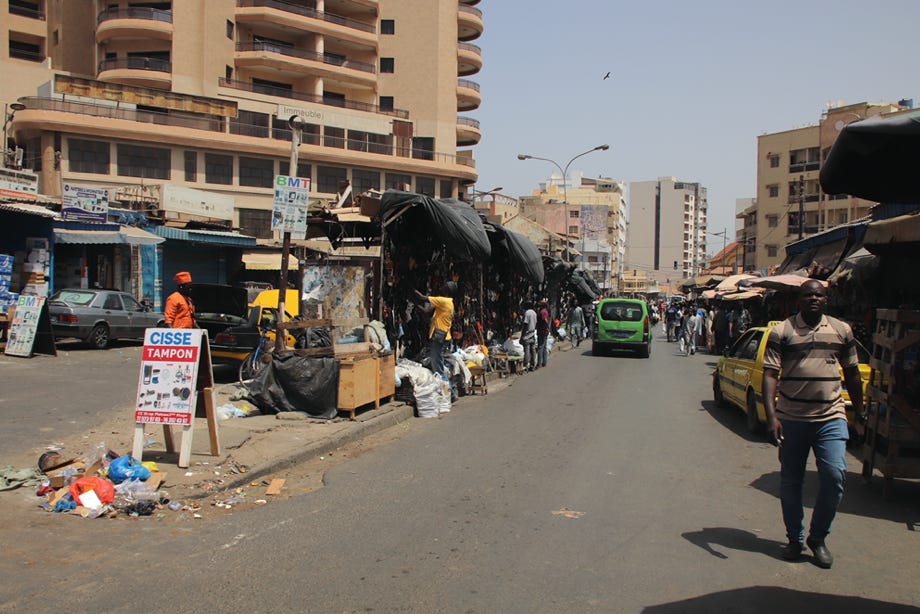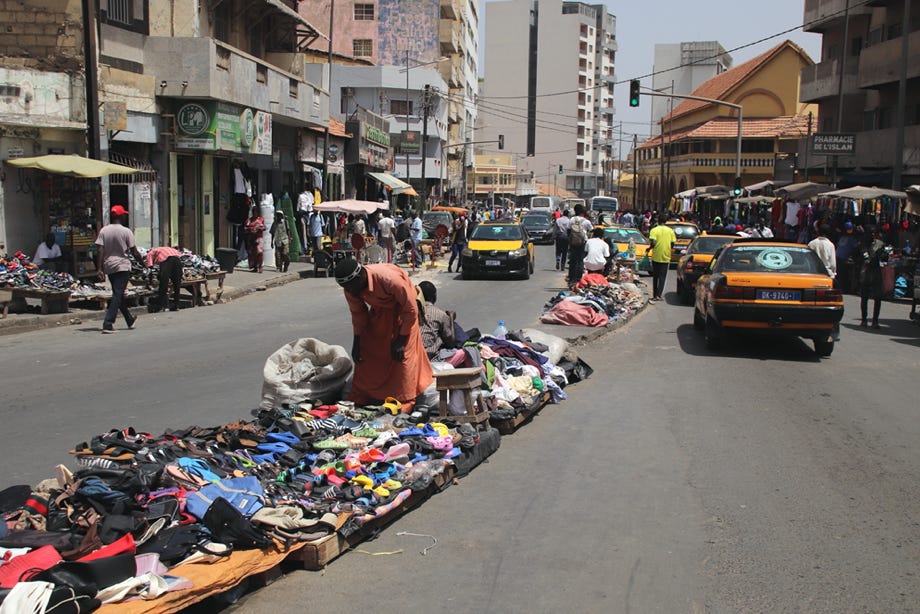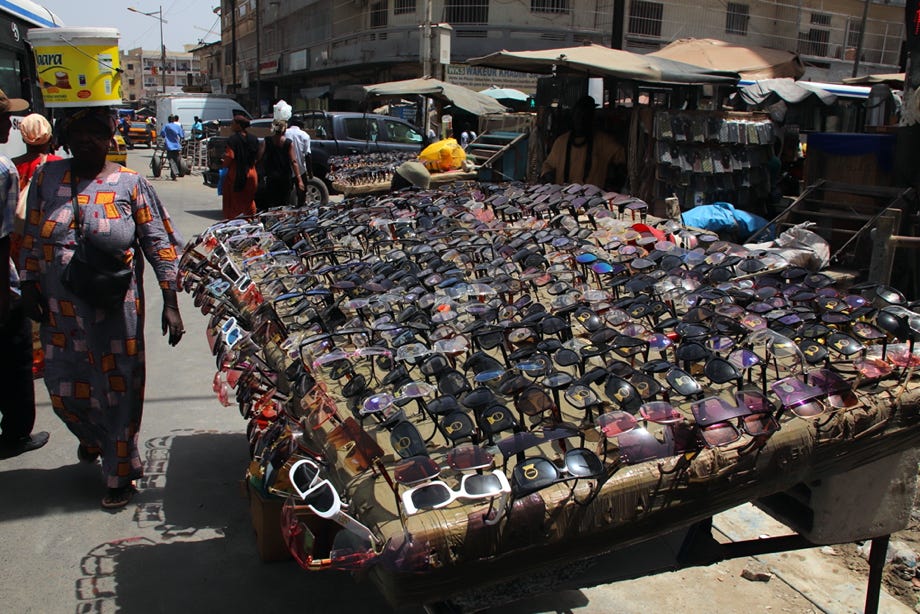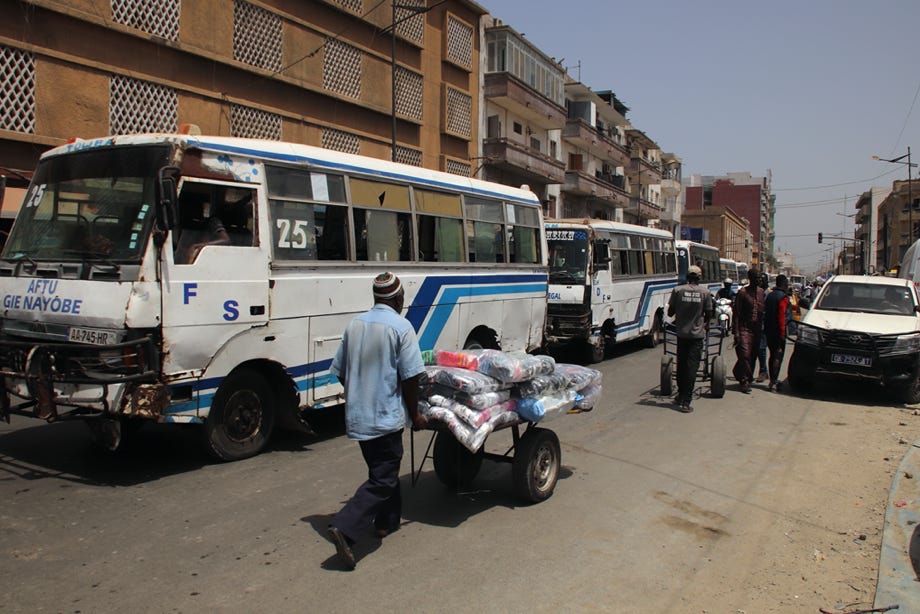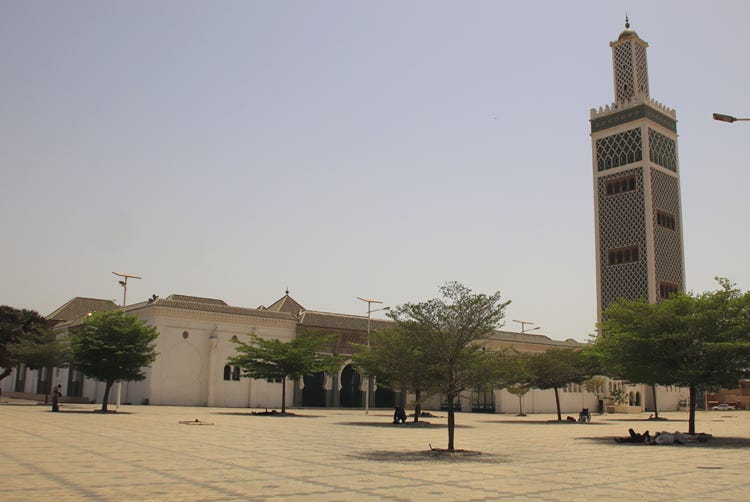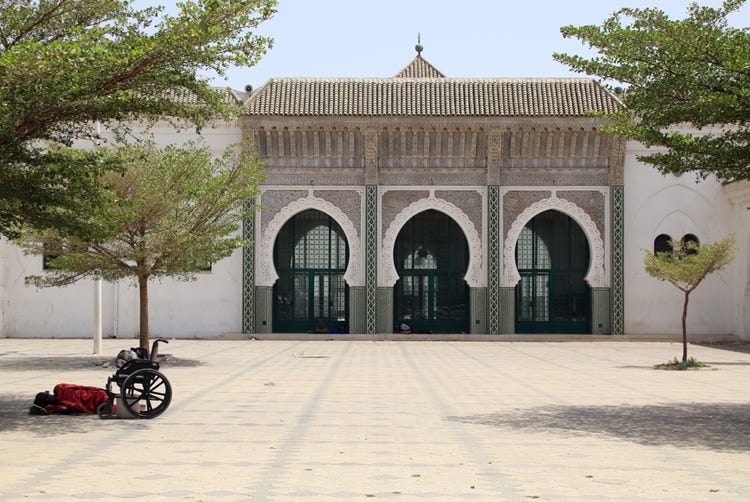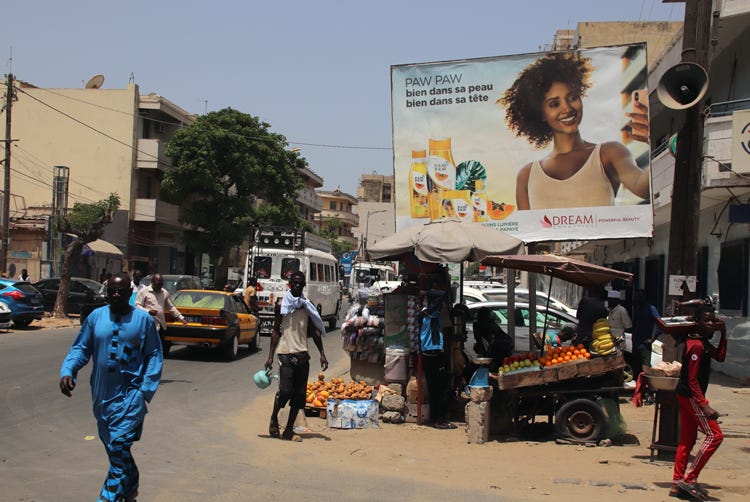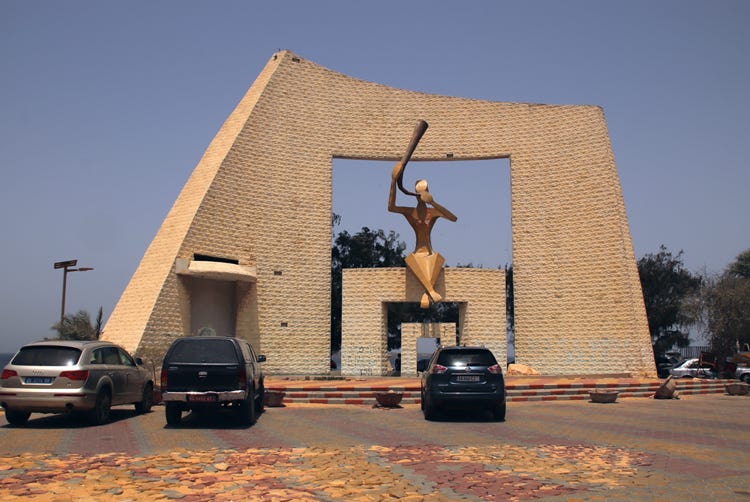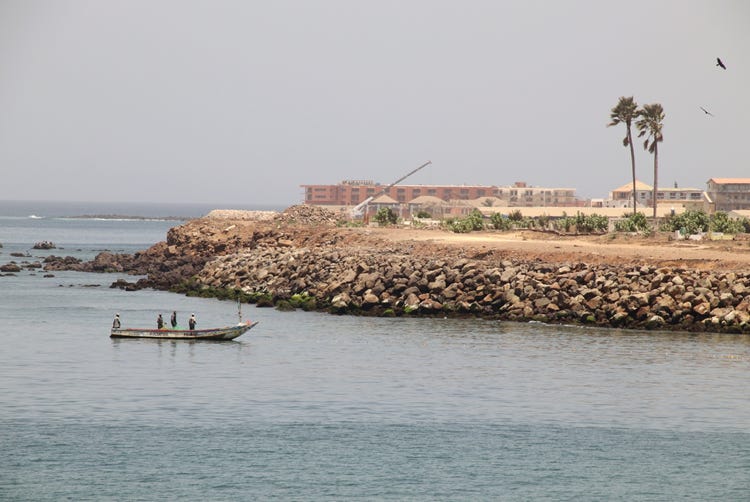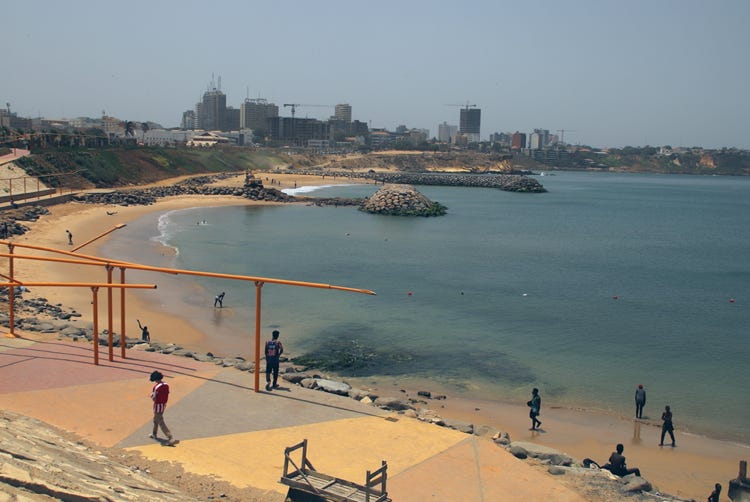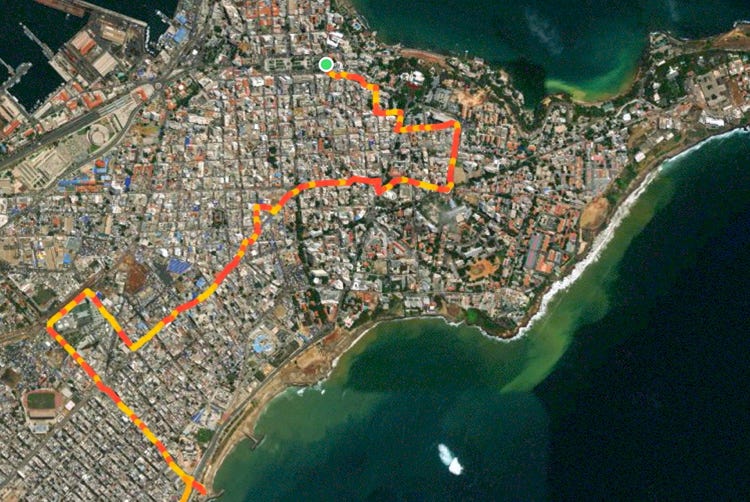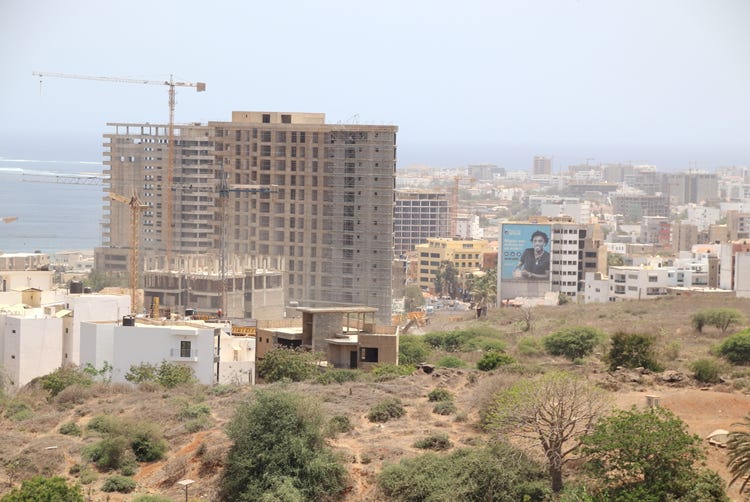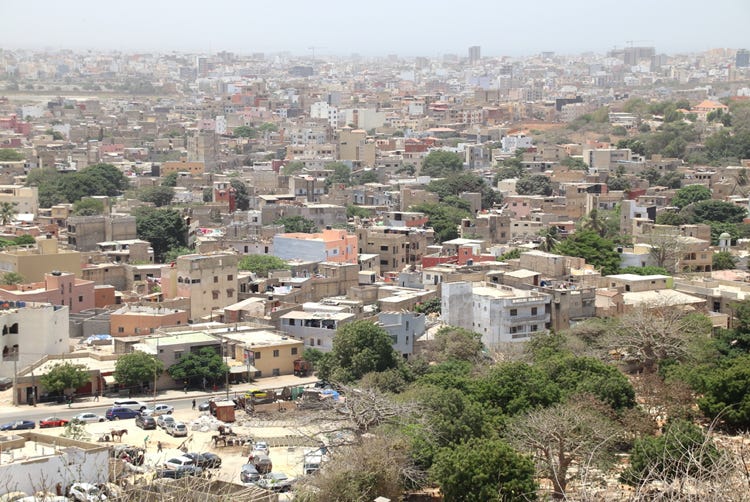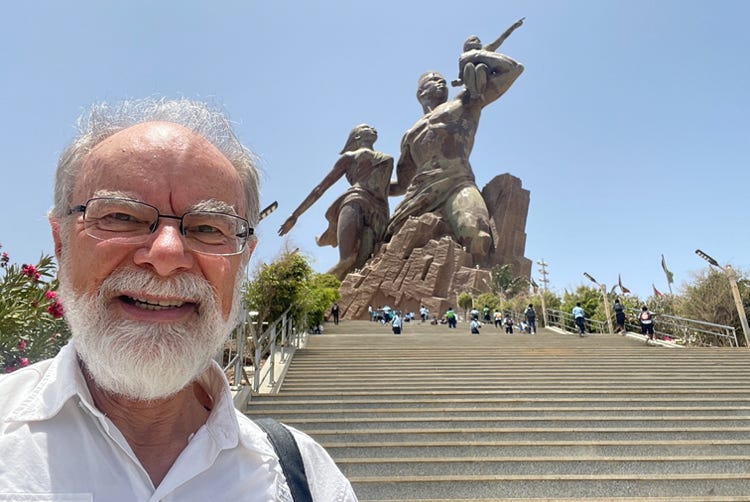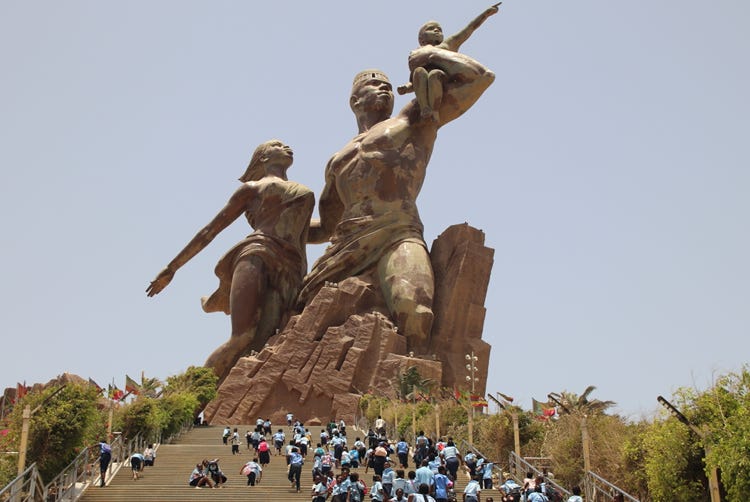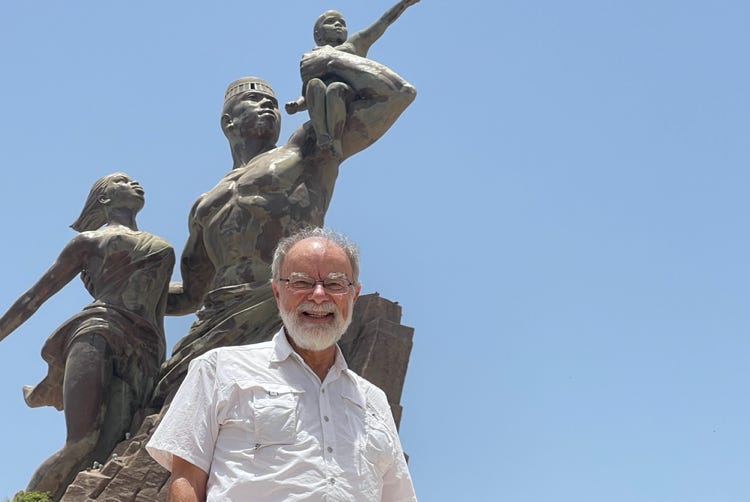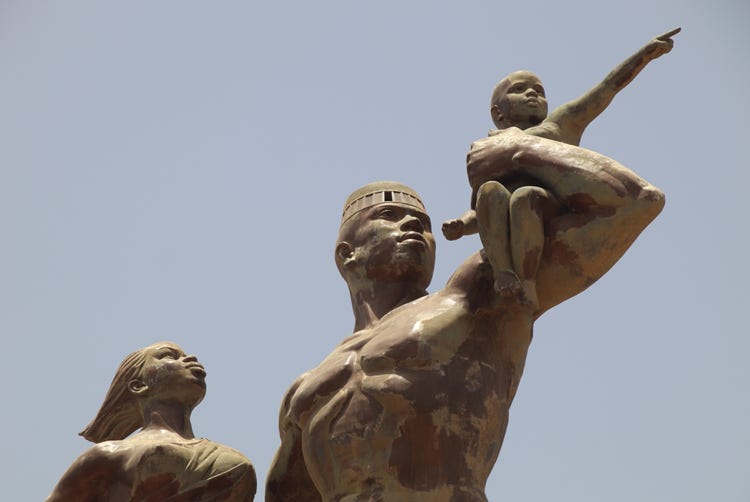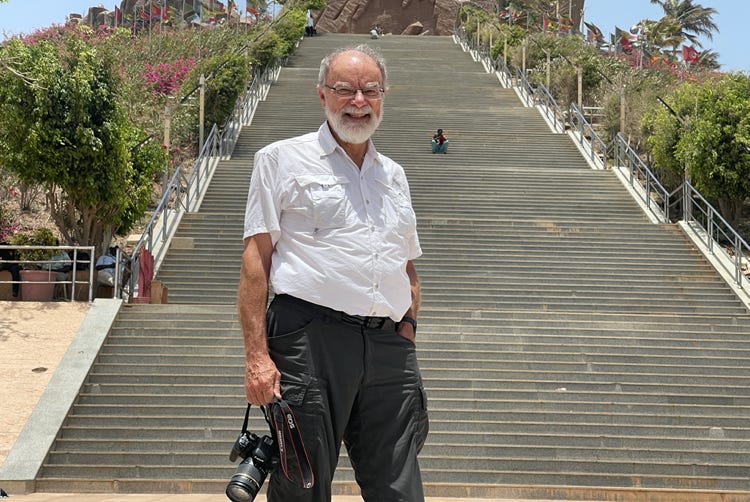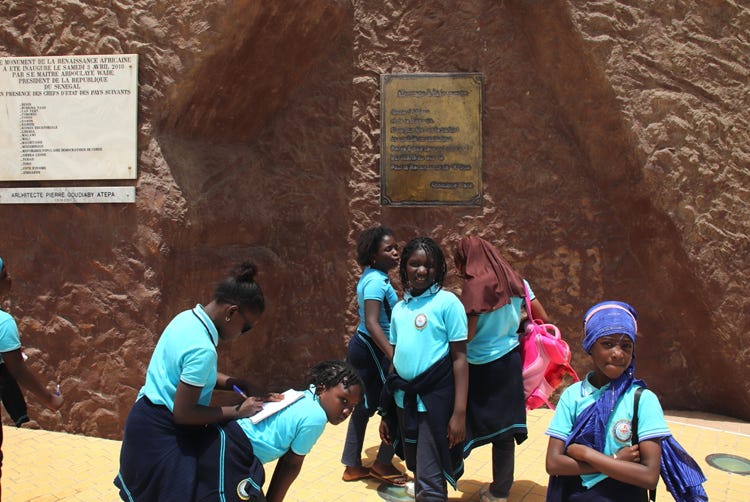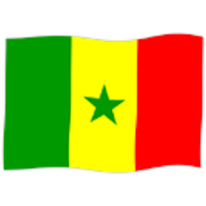
After three days of travelling, it was great to spend a day walking the streets of one of West Africa’s most vibrant cities. With a population of 3.5 million people, or about 20% of Senegal’s total population, Dakar is a lovely mix of French and African cultures. Although it has some noisy, bustling market areas as well as horrendous traffic congestion, most of the city is surprisingly calm and orderly, and with the exception of far too many of the footpaths, quite well maintained.
I managed to get six and a half hours sleep last night after falling asleep after 1:00am, a very late night because of the need to do clothes washing, catch up on some work e-mails, and so on. Knowing that I would probably be somewhat tired today, I had planned a flexible program that could be adapted according to the weather, my tiredness, and anything unforeseen that might arise when entering a new country.
It was a good plan and I had a fabulous day, completing about six kilometres of walking and seeing all the points of interest in Dakar I had planned for the day (apart from the one which had been demolished, but it’s hard to be too self-critical about that one).
I had a great breakfast at the hotel and set off for my walk at about 10:45am after getting a local SIM card – partly to aid navigation through Dakar but more especially to aid my navigation for the long drive that I have planned for tomorrow and the day after that.
I took a fairly twisty route in a south-westerly direction from my hotel to my first stop, the Place de Soweto. This is one of Dakar’s more spectacular traffic roundabouts (of which there are many in Dakar, many of which mark the centre of stellate street pattern; Dakar is, after all, the product of French colonial-era city planners). In the middle of the roundabout there is an eye-catching statue of a traditionally clad man and woman holding hands in celebration (or maybe in defiance, it’s a bit hard to tell), which is surrounded by several impressive public buildings including Senegal’s House of Assembly and the University of Dakar’s IFAN (Institut Fondamental D’Afrique Noire) Museum of African Art.
I headed north from Place de Soweto to Dakar’s main Catholic cathedral, the Cathedral of Our Lady of Victories. Built on the site of a former cemetery, the cathedral was consecrated in 1936 and is said to be the largest religious space in Dakar. The large white building features an interesting – indeed eclectic – mix of architectural styles, with a large golden Turkish dome surrounded by 20 Greek windows, Sudanese towers and (apparently) English granite. I didn’t get to see the interior as my arrival coincided with a large group of primary school students entering the building for some kind of ceremony.
I continued my walk northwards to what I had read was a “must see” in Dakar – the Marché Sandaga, Dakar’s largest market in a huge three-storey building. Unfortunately I was a bit late as the building had been completely demolished – all that remained was a small dirt car park and the beginnings of a construction site for a new building.
However, all was not lost, as the market seemed to have dispersed along the sides – and also down the middle – of many of the surrounding streets. It was great to get more of a sense of African vibrancy by walking along the streets and becoming immersed in the hustle, bustle, noise and sights of the market. I even took a two-minute video of part of my walk towards the north-west along Avenue Emile Badiane because still photos just can’t capture the atmosphere. I encourage you to spend two minutes watching the video HERE. I have repeated the link at the foot of this page if you prefer to keep reading and looking at the still photos for the time being.
I continued walking to the north-west until I reached Dakar’s Grand Mosque, which I think must vie with the Catholic cathedral as being Dakar’s largest religious space. Designed by French and Moroccan architects, it was opened in 1964 and resembles the Mosquée Mohammed V in Casablanca, Morocco (which I visited in January 2008).
The mosque marked the northernmost point of my city walk, and I continued in a south-westerly direction towards the coastline. (The aerial photo showing my walking route has north at the left of the image). My walk finished at the Porte du Troisième millénaire, a modern monument that was finished in 2001 to symbolise the crossroads at which Africa stood at the beginning of the new millennium. Standing 16.5 metres in height and designed by a Senegalese architect, the monument is a silhouette with three doors facing the ocean, each with a message surrounded by three baobab trees. Being on a small peninsula on the coastline, the monument also offered some great views of Dakar’s nearby beaches and cliffs.
Having walked 5.5 kilometres, I was ready to negotiate a fare and take a taxi for the 10 kilometre trip to the final stop on my self-devised city tour, the African Renaissance Monument. This monument is (in my view) one of the great sights in Africa; only finding itself a little deficient, perhaps, if compared to the Great Pyramids of Giza (Egypt), Victoria Falls (on the border of Zambia and Zimbabwe) or the rock-hewn churches of Lalibela (Ethiopia).
I first saw the monument in January 2014 when I was in transit on a flight from Accra to Banjul. We had landed at what is now Dakar’s old airport (it is now used by the military). It was night time and we were not permitted to leave the aircraft during the transit stop, but as we taxied to the end of the runway for take-off I saw this immense flood-lit monument overlooking the runway from a nearby hill. It immediately reminded me of the scale of monuments in North Korea and I made a mental note that one day I MUST return to see that monument up close. Today was that day.
Designed by a Senegalese architect, Pierre Goudiaby, drawing on a concept developed by the-then President (Abdoule Wade), and constructed (you guess it!) by North Korea’s Mansudae Overseas Projects Corporation between 2008 and 2010, the monument is 52 metres tall. Unsurprisingly, it is the tallest statue in Africa.
The monument shows what is clearly an African family being drawn upwards towards the sky. The man is carrying his child on his biceps and holding his wife by the waist, which represents (in the words of the official commentary) “an Africa emerging from the bowels of the earth, leaving obscurantism to go towards the light”.
At the time of my visit this afternoon, there were several groups of neatly uniformed primary school children visiting on a school excursion. In that context, I was quite touched to read the plaque at the foot of the monument which speaks to the children of Africa: “Message à la jeunesse. Jeune d’Afrique et de la Diaspora: Si un jour tes pas te portent as pied de ce Monument, pense à tous ceux qui ont sacrifié leur liberté ou leur vie pour la Renaissance de l’Afrique. – Abdoulaye Wade”. (Message to the Youth. Youth from Africa and the Diaspora: If one day your steps carry you to the foot of this Monument, think of all those who have sacrificed their freedom or their life for the Renaissance of Africa. – Abdoulaye Wade”. I was even more impressed to see so many children reading that plaque and taking notes.
It was mid-afternoon when I left the Monument, negotiated a fare and took a shared taxi back to central Dakar. Rather than returning to my hotel I decided on something of a whim to check the Hertz rental car office where I had reserved a car for collection tomorrow morning. I had a written confirmation but I always like to check locations if possible. I’m glad I did. According to my printed confirmation, I had to collect the car from the Hertz office that is located in the Novotel Hotel, about 450 metres walk from my hotel.
When I arrived, I was told that there is no Hertz office in the Novotel, but there is a Hertz office in the Pullman (where I am staying). That sounding like potentially welcome news – until I walked back to the Pullman to confirm arrangements there and was told there is no Hertz office in the Pullman either. A very helpful lady on the front desk phoned Hertz on my behalf, confirmed that they had my reservation, and that I would have to go to the nearby Hertz office to collect the car. I was given a new address that had never appeared on the Hertz website nor on my printed confirmation; hopefully it will all be fine as it is located within walking distance from my hotel (about 650 metres or 10 minutes walk in the opposite direction from the Novotel).
I’m really glad that I took the time to check the car reservation and didn’t just head off tomorrow morning to the Novotel – that would have delayed the start of my drive quite considerably.

